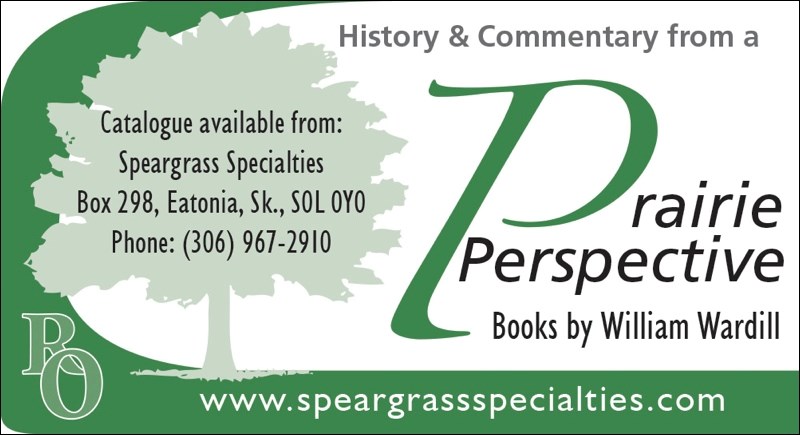I have lived for 90 years on the northern lands of the Great Central Plain of North America. I was two years old when the stock markets crashed and the rain stopped falling. For the next 10 years I was too little to understand the disaster of drought, dust and Depression that was destroying the economy of North America. I knew what I saw. I saw tumbleweeds and Russian thistles bouncing across parched fields to be caught by fences and buried in windblown topsoil. The sparse vegetation that survived was attacked by hordes of ravenous grasshoppers. People were leaving. Friends were leaving. Those who were forced to stay prayed that good times would come back again or else they cursed the prairie country as the anteroom of Hell.
Through all of that terrible time I was safe in a little settlement where there was always shelter, fuel for coal and wood stoves, food and home grown entertainments. AND THERE WAS WATER. It came, pure and cold from the aquifer that fed the water tower beside the railway tracks. Without it there would have been no infant village. There would have been nothing but desolation. As an adult, I read the full story of what has come to be called the Dirty Thirties. In my own district, wells dried up and farmers were forced to hitch their teams to grain tanks to bring barrels of water from the South Saskatchewan River. In the Dust Bowl south of the border people were dying from what was called “dust pneumonia.”
The Dirty Thirties ended in 1939 when the rains had come again and the needs of the Second World War had restarted derelict factories and put military uniforms on the army of unemployed. There is always money for warfare.
In 2017, the quarter-section farms with their puny plowed fireguards are gone. The firefighting capabilities of the Canadian prairies has grown to become as sophisticated in equipment as are the larger farms. My own small community houses a fire truck that is well equipped to deal with grass fires and burning stubble. There is also a tanker and a rescue vehicle carrying airbags and Jaws of Life which can lift and slice into accidentally damaged vehicles. Left behind on standby is a trailer-mounted pumper of the same vintage that Canadian factories made to ship to England during the WWII Blitz.
Every urban-based fire department is backed up by earth-moving equipment of the rural municipalities. In addition, there are numerous water tankers and cultivation equipment on the farms. Hutterite colonies monitor fire calls and always give assistance with equipment and manpower. In the spring of 2017 we felt safe. Later in the summer, all local governments began to ban open fires.
A prelude to the firestorm of Oct. 17 was the fire that was started by the detonation of an old artillery shell on the Suffield Forces Base in southeastern Alberta. (Suffield, a base once used for the development of chemical and biological weapons, now serves as a rented battlefield for foreign armies.) Civilian firefighters were kept waiting for 45 minutes before being permitted to enter the base. By that time it was too late. The fire had escaped to adjoining rangeland. The federal government faces multi-million dollar claims for incinerated cattle, buildings machinery and stored fodder.
Fire returned on Oct. 17. Strong winds blew two trains off the rails in Alberta. A small fire near Hilda, Alberta, was fanned into a conflagration that roared through dry grass and stubble fields into Saskatchewan. There are newspaper accounts of what happened. Winds ranging up to hurricane force snapped off power poles and sparking wires dropped into tinder-dry grass to ignite fires that grew into spreading firestorms. The fires caused the mandatory evacuation of Burstall, Leader and the RM of Deer Forks. North of the South Saskatchewan River, farms and ranches in the RM of Chesterfield were threatened and my own town of Eatonia was only minutes away from a mandatory evacuation order. Then the roaring wind changed direction and the rain began to fall. I could go outside to see a horizon free of flames and know that my community and my work of a lifetime would not be destroyed.
A later tally of the destruction indicated that at least 85,000 acres were burned along with barns, homes, sheds machinery and stored bales. At least 750 cattle died, but most of the deer, antelope and birds that live on the plains escaped.
James Hargrave, a rancher and volunteer firefighter from Walsh, Alberta, died when his water truck collided with another vehicle on a road where visibility was obscured by smoke and flying debris. Other men were hospitalized, one in critical condition. For two more days weary firefighters were out again, extinguishing flaring hot spots.
My community didn’t disappear in a raging firestorm nor did the yards and buildings of families I know and care about on both sides of the river. It was a miracle. Now, snow is making a white blanket over the fire scars on my beloved prairie.



